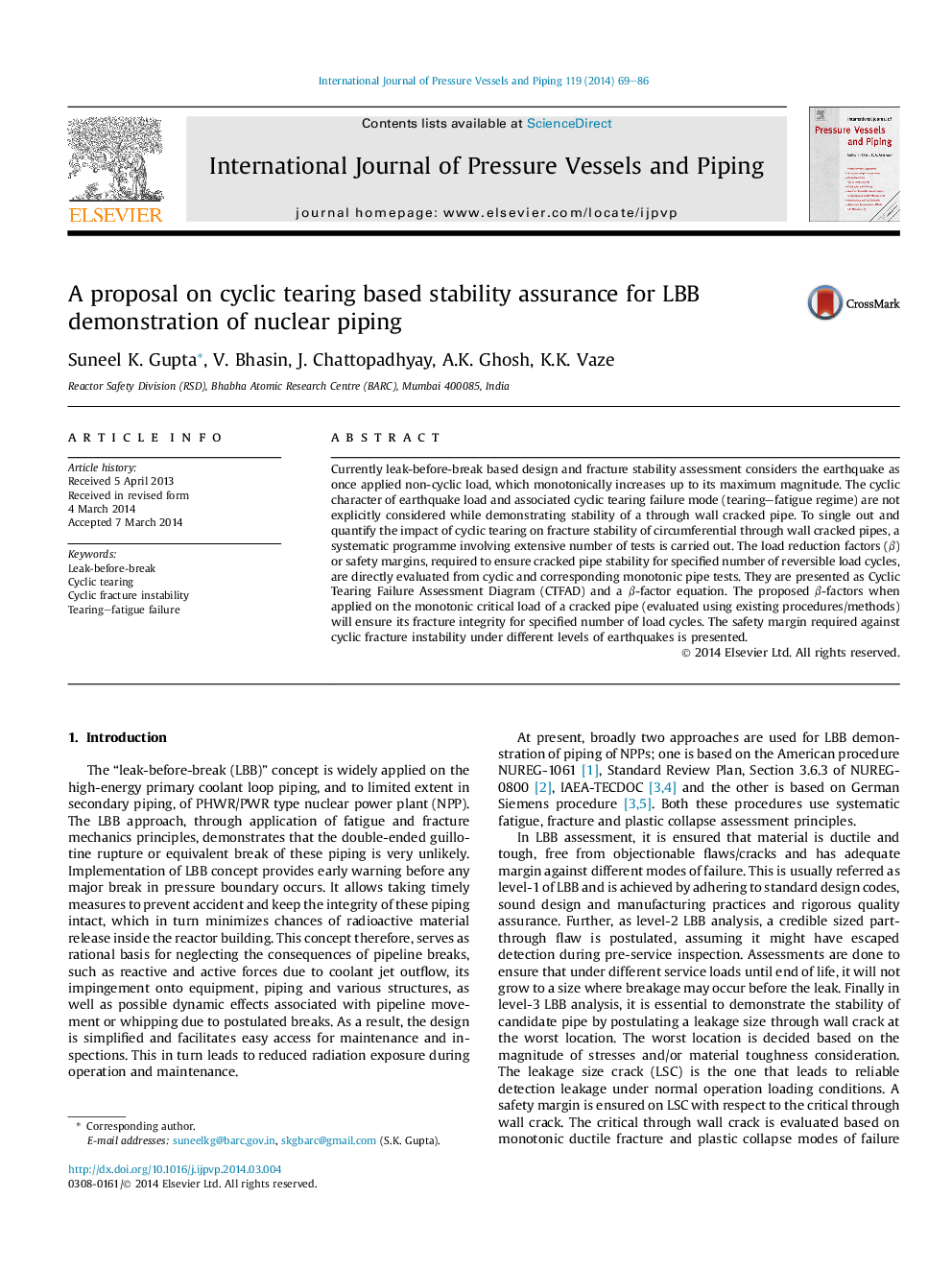| Article ID | Journal | Published Year | Pages | File Type |
|---|---|---|---|---|
| 787816 | International Journal of Pressure Vessels and Piping | 2014 | 18 Pages |
•Cyclic/monotonic fracture pipe tests were conducted to assess fatigue-tearing failure.•A cyclic tearing failure assessment diagram (CTFAD) is developed from tests results.•A proposal is made for cyclic tearing based stability assurance.•It uses existing methods to assure fracture integrity for given number of cycles.•Its use will improve the leak-before-break (LBB) design used in NPPs.
Currently leak-before-break based design and fracture stability assessment considers the earthquake as once applied non-cyclic load, which monotonically increases up to its maximum magnitude. The cyclic character of earthquake load and associated cyclic tearing failure mode (tearing–fatigue regime) are not explicitly considered while demonstrating stability of a through wall cracked pipe. To single out and quantify the impact of cyclic tearing on fracture stability of circumferential through wall cracked pipes, a systematic programme involving extensive number of tests is carried out. The load reduction factors (β) or safety margins, required to ensure cracked pipe stability for specified number of reversible load cycles, are directly evaluated from cyclic and corresponding monotonic pipe tests. They are presented as Cyclic Tearing Failure Assessment Diagram (CTFAD) and a β-factor equation. The proposed β-factors when applied on the monotonic critical load of a cracked pipe (evaluated using existing procedures/methods) will ensure its fracture integrity for specified number of load cycles. The safety margin required against cyclic fracture instability under different levels of earthquakes is presented.
